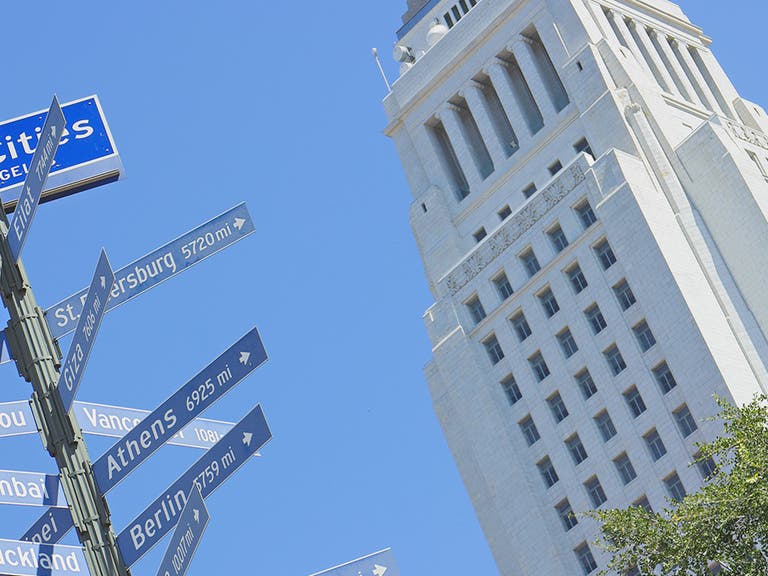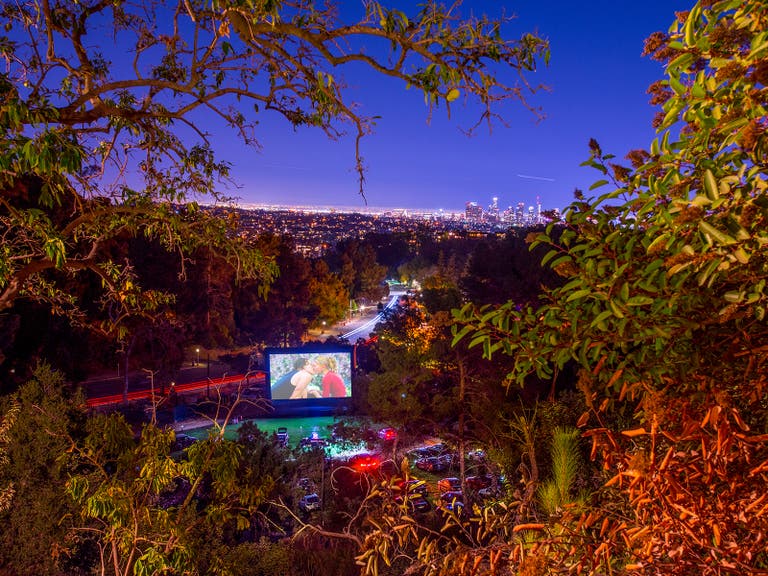The Sister Cities of Los Angeles

Founded by President Dwight D. Eisenhower in 1956, Sister Cities International is a nonpartisan 501(c)(3) nonprofit which serves as the national membership organization for individual sister cities, counties, and states across the U.S. This network unites tens of thousands of citizen diplomats and volunteers in 570 member communities with over 2,300 partnerships in 150 countries on six continents.
Sister Cities International creates relationships based on cultural, educational, information and trade exchanges, creating lifelong friendships that provide prosperity and peace through person-to-person “citizen diplomacy.” Presidents Kennedy, Johnson, Nixon, Ford, Reagan, Bush, Clinton, Bush, and Barack Obama have served as the Honorary Chairman of Sister Cities International.
Sister Cities of Los Angeles is a network of 25 Sister Cities on six continents. Sister Cities of Los Angeles celebrates the myriad cultures of LA through a continuing program of service in the areas of civics, educational, cultural, trade and economic development, travel, sports and recreation, and other areas of mutual interest. Sister Cities of Los Angeles promotes the image of the City of Los Angeles around the world, expands global interest in our city, and invites visitors to LA.
This year and in 2020, several Sister Cities are celebrating the anniversary of establishing their partnerships with Los Angeles. Read on and find out more about these Sister Cities around the world.
Athens, Greece (1984)
Celebrating its 35th anniversary as a Sister City in 2019, Athens is one of the oldest cities in the world - its history can be traced back almost 4,000 years. As the capital of Greece, it is home to the Acropolis, one of the most advanced citadels built during its time. Athens reached its culmination in the Classical Period of the fifth century BC, becoming a powerful city-state and artistic center. It was during this period that the city experienced a flourish of artistic innovation in art, architecture, literature, and philosophy that has had a profound influence on human civilization.
Eilat, Israel (1969)
Celebrating its 50th anniversary as a Sister City in 2019, Eilat is Israel’s southernmost city, a busy port and popular resort at the northern tip of the Red Sea, on the Gulf of Aqaba. The city’s beaches, coral reef, nightlife and desert landscapes make it a popular destination for domestic and international tourism. A concerted effort by the Israeli Government to populate Eilat began in 1955, with the resettlement of Jewish families from Morocco. Now home to more than 49,000 people, Eilat is part of the Southern Negev Desert, at the southern end of the Arava, adjacent to the Egyptian village of Taba to the south, the Jordanian port city of Aqaba to the east, and within sight of Saudi Arabia to the southeast, across the gulf.
Giza, Egypt (1989)
Celebrating its 30th anniversary as a Sister City in 2019, Giza is an Egyptian city on the west bank of the Nile, near Cairo. The Giza Plateau is home to iconic Egyptian monuments, including 3 tall pyramids built as royal mausoleums around the 26th century B.C.
Jakarta, Indonesia (1990)
Celebrating its 30th anniversary as a Sister City in 2020, Jakarta is the capital and most populous city of Indonesia. Located on the northwest coast of the world’s most populous island of Java, the city is the center of economics, culture and politics of Indonesia. Jakarta’s business opportunities, as well as its potential to offer a higher standard of living, attract migrants from all over the Indonesian archipelago, making the city a melting pot of many communities and cultures. The city is currently the seat of the ASEAN Secretariat as well as important financial institutions such as the Bank of Indonesia, the Indonesia Stock Exchange, and the corporate headquarters of numerous Indonesian companies and multinational corporations. Jakarta is listed as an Alpha Global City in the 2016 report of Globalization and World Cities Research Network (GaWC). Based on the global metro monitor by the Brookings Institution, in 2014, the GDP of Jakarta was estimated at US$ 321.3 billion and economic growth was ranked 34th among the world’s 200 largest cities.
Mexico City, Mexico (1969)
Celebrating its 50th anniversary as a Sister City in 2019, Mexico City is the capital and most populous city of Mexico. Mexico City is one of the most important financial centers in the Americas. Greater Mexico City has a GDP of $411 billion in 2011, making Mexico City urban agglomeration one of the largest metropolitan areas in the world. The city was responsible for generating 15.8% of Mexico’s GDP and the metropolitan area accounted for about 22% of total national GDP. As a stand-alone country, in 2013, Mexico City would be the fifth-largest economy in Latin America—five times as large as Costa Rica and about the same size as Peru. Mexico’s capital is both the oldest capital city in the Americas and one of two founded by Amerindians (Native Americans).
Nagoya, Japan (1959)
Celebrating its 60th anniversary as a Sister City in 2019, Nagoya is the largest city in the Chūbu region of Japan. It is Japan’s third-largest incorporated city and the fourth most populous urban area. It is located on the Pacific coast on central Honshu. It is the capital of Aichi Prefecture and is one of Japan’s major ports along with those of Tokyo, Osaka, Kobe, Yokohama, Chiba, and Kitakyushu. It is also the center of Japan’s third-largest metropolitan region, known as the Chūkyō Metropolitan Area.
San Salvador, El Salvador (2005)
Celebrating its 15th anniversary as a Sister City in 2020, San Salvador is the capital and largest city of El Salvador and its eponymous department. It is the country’s political, cultural, educational and financial center. As a “beta” global city, San Salvador is also an important financial hub of Central America. San Salvador is located in the Salvadoran highlands, surrounded by volcanoes and prone to earthquakes. San Salvador has been the host city for various regional and international sporting, political, and social events. The Central American Integration System (SICA) has its headquarters in San Salvador. The Central American Bank for Economic Integration (BCIE) also has its headquarters in San Salvador.
St. Petersburg, Russia (1989)
Celebrating its 30th anniversary as a Sister City in 2019, St. Petersburg is Russia’s second-largest city after Moscow, with five million inhabitants in 2012, and an important Russian port on the Baltic Sea. Between 1713 and 1728 and in 1732–1918, Saint Petersburg was the capital of imperial Russia. In 1918, the central government bodies moved to Moscow. Saint Petersburg is one of the modern cities of Russia, as well as its cultural capital. The Historic Centre of Saint Petersburg and Related Groups of Monuments constitute a UNESCO World Heritage Site. Saint Petersburg is home to The Hermitage, one of the largest art museums in the world. Many foreign consulates, international corporations, banks, and businesses have offices in Saint Petersburg.

